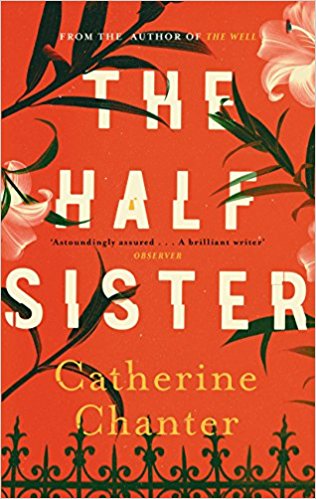Catherine Chanter’s second novel opens with a coroner’s narrative verdict of an unusual death. This flashforward technique is not unusual in the crime/mystery genre and we might assume the remainder of the novel will proceed to take us on a journey that culminates in this death, shedding light on the steps towards this moment. However, The Half Sister eschews the tradition. Instead, only the first few chapters lead us to the freak death — or is it murder?— of Valerie Steadman. The focus thereafter is on the intense fallout and psychological damage amongst Valerie’s relatives.
The third-person narrative stance traverses between the three central characters: Valerie’s traumatised son Mikey, her wealthy and privileged brother-in-law Edmund, and her titular half-sister Diana — the most divisive character of all. Diana and Edmund’s country manor Wynhope House is shaken by an earthquake causing its ill-conceived tower to collapse with Valerie trapped inside. Although this seems like a tragic act of God, little Mikey witnesses a harrowing truth that he carries with him in silence for the next year. For some the sudden switching allegiance of the narrator might feel disorientating but this mechanism allows Chanter to skilfully illuminate the motivations and thought processes of the key players in the same pivotal moments, which in turn develops the central thematic notions of “truth” and how absolute that is.
Chanter displays talent in her mastery of figurative language and manipulation of sentence construction, often exploring character thoughts over sprawling sentences that take abstract twists and turns. At times this can be challenging to keep up with but the skill is indubitable. The author is also adept at nurturing conflict and maintaining suspense long after the first-act collapse of the tower at Wynhope, building particularly palpable tension between cold, aloof Diana and her unwanted nephew who knows far too much. Towards the climax of the novel, though, much of this tension seems to fade to make way for deeper psychological probing of the three characters and their long-term dilemmas in the wake of Valerie’s death.
With the upper-class adults, it’s difficult at times to feel much sympathy for their selfish acts, despite being offered a window into their problematic childhoods. However, Chanter succeeds in evoking our empathy for Mikey, whose elective mutism, bouts of rage and apparent abandonment from his aunt and uncle following his mother’s death is often heartbreaking. The author’s work with the NHS helping people suffering severe mental health issues has surely lent itself to this insightful characterisation.
The Half Sister is a taut psychological piece that, despite its English earthquake setup, is not so much focused on unbelievable twists and manic turns, but more on the shocking truths of human behaviour and the aftermath of trauma. Although the plot itself is perhaps drawn out thinly by the end, it’s the ever-present sense of dread, moral dilemmas and depth of the characters that make the novel a powerful read.
